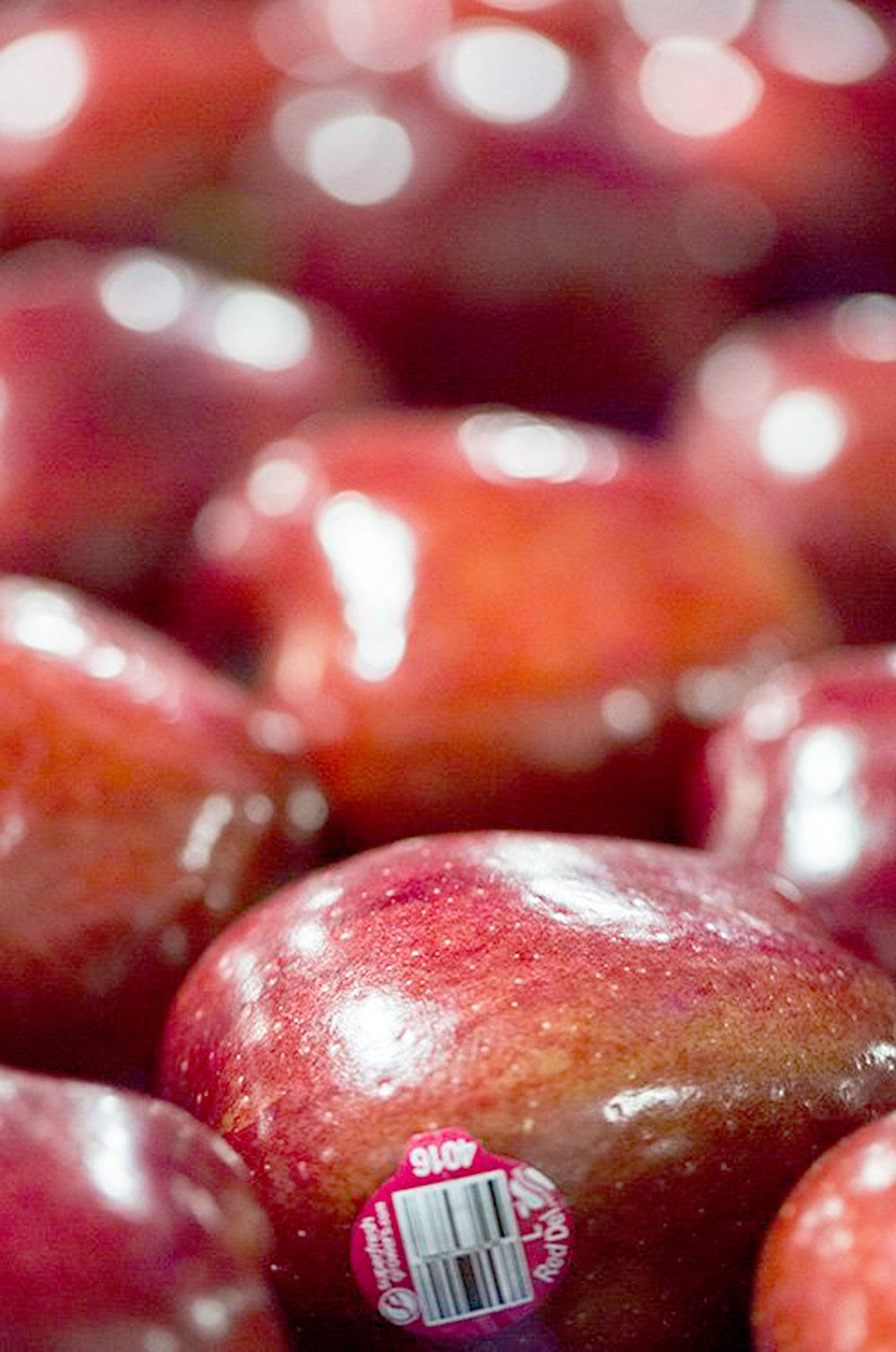By Nevonne McDaniels
The Wenatchee World
WENATCHEE — Bing Crosby and Tommy Dorsey topped the music charts.
Disney’s “Pinocchio” and Alfred Hitchcock’s “Rebecca” were on the big screen.
Red Delicious was the up-and-comer, second only to Winesap in apple production in Washington state.
That was in 1940.
“That was the last time Red Delicious wasn’t on top,” said Rebecca Lyons, international marketing director for the Washington Apple Commission. “Red Delicious has been the highest production volume apple for 78 years.”
The iconic Washington apple could lose its top spot this year if the Washington State Tree Fruit Association forecast released in August holds true. It calls for Red Delicious to account for 21.5 percent of the total crop behind Gala, with 24 percent.
The “classic” red apple gained ground with growers and shippers because it looks good and stores and ships well.
“It’s the iconic apple that helped identify Washington state,” Lyons said.
In the 1980s, it accounted for more than half — and at one point 75 percent — of the state’s apple crop. In 1986, of the 160,000 acres of apples planted in the state, Red Delicious was on 121,000 of them. That same year, just 230 acres were planted in Gala, according to the U.S. Department of Agriculture tree fruit acreage report.
A shift was about to start, though.
New varieties were being introduced that could be planted closer together with higher yields, with harvest at different times, extending the fresh market season and spreading out the demand for labor. Consumers were willing to pay more for a different apples and controlled atmosphere storage techniques were being fine-tuned to maintain quality later in the season.
In 2017, Gala topped Reds in total acreage for the first time, with Fuji, Honeycrisp and Granny Smith gaining ground, following a trend that started gaining traction in the early 2000s.
“Reds over the past 20 years have been less dominant,” said Tim Kovis, a spokesman for the Washington State Tree Fruit Association. “We’ve been seeing growers trying to diversify.”
The demand for Reds hasn’t disappeared.
“A lot are shipped to Mexico and India and some to the Asian markets,” Kovis said. “They’re a very durable apple that travels well and there’s not a lot of post-harvest challenges that others have.”
Jared England of Manson Growers said Red Delicious accounts for about 45 percent slice of the co-op’s apple volume. The co-op has 85 to 90 growers, mostly in the Lake Chelan Valley, but some along the river in the Tonasket and Okanogan area.
“That’s where it was last year. We anticipate it to be in that range this year,” he said. “We’re a little bit unusual. We sell the majority in the export market. We have a pretty decent return on Red Delicious, higher than some other warehouses that sell domestically. They aren’t the same as Honeycrisp, but for Red Delicious we’re competitive.”
Some of the co-op’s growers have switched to newer varieties.
“It’s an evolution that probably will hit all the warehouses at some point,” he said. “If the production of Reds continues to decrease statewide, we may see an increase in price. When Goldens decreased in volume, we saw a nice increase in pricing.”
The ongoing trade war between the U.S. and countries that import lots of apples, especially Red Delicious, is creating a challenge.
England said smaller warehouses, like Manson Growers, have an advantage in some ways.
“We have flexibility to move volume between countries pretty easily without impacting the overall return for growers,” he said. “If a country has a high tariff that will impact revenue, we can move that volume to another country.”
Each country has a different “ideal” size, color and shape.
“They all have their own preference. That’s why it’s so involved. We want to find a home for every apple we pick,” England said. “A lot of things we can’t control, like exchange rates, tariffs and political factors. But we can control quality and timing. We do a good job on the things we can control.”
The Apple Commission’s Lyons said about 50 percent of the Red Delicious crop is sold overseas.
Other varieties are waiting in the wings.
“You’ve heard about Cosmic Crisp?” she said of the new variety bred by Washington State University expected to start showing up in stores next year. “Everyone is pretty excited about that. You see a lot of sticks in the ground in the baby orchards.”
Even so, she said, “I have a hard time believing that Red Delicious will go away entirely. I could be wrong. Where are the Winesaps? It’s taken a long time for those to go away. We still have a few grown commercially and you see them in roadside stands. We’ll see what happens with Red Delicious. This is an interesting time in the apple business.”


